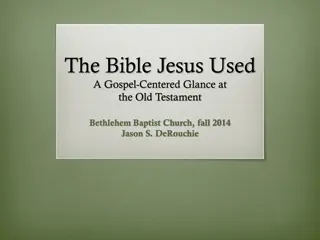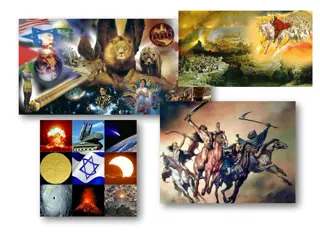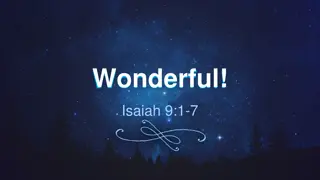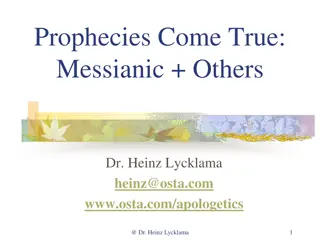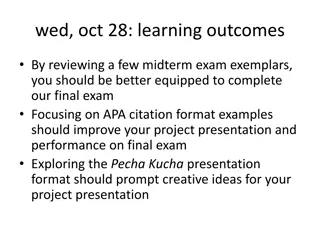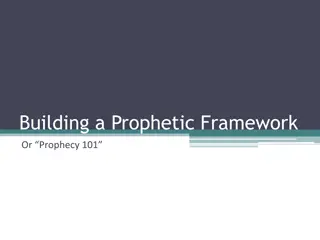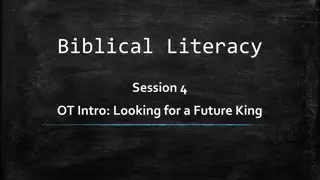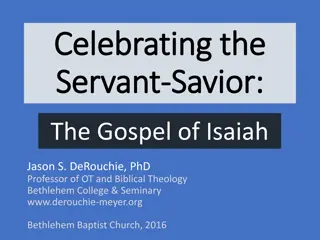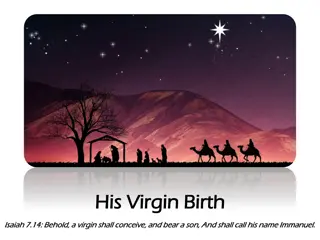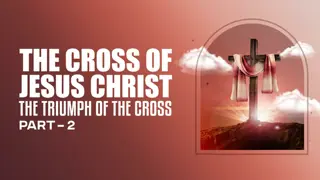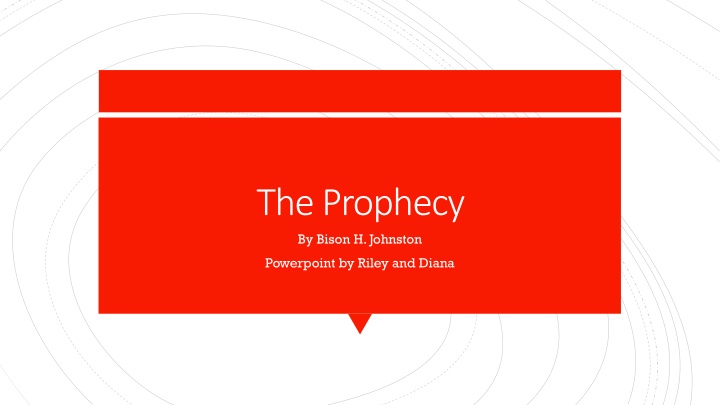
Unveiling the Story: Bison H. Johnston's Prophecy & Themes
Dive into the intriguing tale of "The Prophecy" by Bison H. Johnston, exploring themes of colonization, foreshadowing, and irony. Discover the clash of perspectives between elders and youth, as well as the use of puns and similes to convey a lighthearted yet profound narrative.
Download Presentation

Please find below an Image/Link to download the presentation.
The content on the website is provided AS IS for your information and personal use only. It may not be sold, licensed, or shared on other websites without obtaining consent from the author. If you encounter any issues during the download, it is possible that the publisher has removed the file from their server.
You are allowed to download the files provided on this website for personal or commercial use, subject to the condition that they are used lawfully. All files are the property of their respective owners.
The content on the website is provided AS IS for your information and personal use only. It may not be sold, licensed, or shared on other websites without obtaining consent from the author.
E N D
Presentation Transcript
The Prophecy By Bison H. Johnston Powerpoint by Riley and Diana
Termsusedwhen understandingthe story
The point of the story is based on the foreshadowing of the fall of the First People because of colonization. FORESHADOWING
POINT OF VIEW It s told by elders, and is not believed by the younger members, explaining the severity of the Whites arrival.
EXTERNAL CONFLICT The conflict being the colonization that has yet to happen, but is context and explains the elder telling them.
The contrast between the two groups appearance defines the general differences between styles of living in the story. CONTRAST
Situational irony through the whole story, instead of trying to prevent the arrival, they ignore it, causing the prophecy's arrival. IRONY
CONCLUSION The concluding message of the story being that no matter the warning, they will not escape the prophecy.
MOOD The mood in the story is humorous, which explains why the young ones aren't believing the elder.
PUN Puns are used consistently throughout the story, supporting the mood and creating a lighthearted spin on upcoming traumatic events.
Termsusedwhen understandingthe theme
Simile They compare the Whites to Wendigos, and little elves solidifying the themes of disgust and misinterpretation.
REPETITION Helps the theme since it underlines their misunderstanding about the Whites by constantly repeating their confusion.
HYPERBOLE They exaggerate when talking about White s appearances and mention they are like elves, wendigos, albinos and exaggerate when talking about their habits.
IMAGERY They use imagery to describe the white people as opposite to themselves and monsters depicting themes of in acceptance and misinterpretation.
PLOT - CONCLUSION The final sentence of the story solidifies the themes of misunderstanding when even with elders wisdom they don't believe them.
SIMILE The same similes used describing whites as Wendigos supports the themes of misinterpretation and distrust of new knowledge.
FIGURATIVE LANGUAGE The storyteller describes the whites figuratively so the younger people have feelings of distrust and humor.
TONE The tone used in the story being lighthearted and happy to support just how not understanding they were of warnings.
Johnston, Basil H.The Prophecy. Native Writers & Canadian Writing, 1990. WORKS CITED












